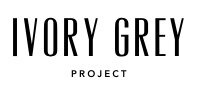How gen-z can use ai to future-proof their careers
If you’re a post-grad or early-career pro, your anxiety isn’t imaginary. U.S. employers announced 153,074 job cuts in October alone, the worst October in 22 years, pushing 2025’s total past one million, with “AI” explicitly cited as a factor alongside cost-cutting and demand slumps. Companies are using automation to rationalize headcount while investors cheer “efficiency.” The message to young workers lands like a punch: learn AI or get replaced by it.
Globally, youth are still bearing the brunt. Youth unemployment typically runs far higher than for adults, and 2025 snapshots show that gap widening in some economies even as headline unemployment looks stable. That disconnect explains a lot of the vibe right now: the macro story says “resilient,” but your feed says “restructuring.”
Here’s the critique too few executives say out loud: blaming AI for layoffs is often a storytelling strategy, not just a technical reality. CrowdStrike cut about 5% of staff in 2025 while praising AI’s efficiencies, earning public backlash for the timing and optics; analysts warned that “AI efficiency” claims can mask broader financial pressures and investor messaging. Challenger’s monthly data shows AI is frequently listed as a cause, but it’s rarely the only cause; cost controls and post-pandemic corrections dominate the fine print. So, what does this mean? Well, executives pick the narrative that plays well on earnings calls, while the labor market absorbs the shock.
So yes, be skeptical, but don’t get stuck there. The people who win the next decade aren’t anti-AI; they’re pro-agency. They learn to bend the tech toward their outcomes.
Start with the tools that actually matter to your workflow. If you’re building visibility and employability through content, Canva’s AI video editor (“Magic Video”) can turn rough clips into social-ready posts in minutes; cutting, styling, and sequencing for you, and even generating videos from text when you need a quick explainer. If you’re angling for marketing, design, or ops roles, this means you can publish proof-of-work weekly instead of quarterly.
For deeper work like actual research, multi-step tasks, and repeatable workflows, use ChatGPT’s newer Agent capabilities. Agents are built for iterative, collaborative flows; you can steer, interrupt, and resume as it composes research, drafts, or structured deliverables, then save that flow so you’re not reinventing it each week. Pair that with enterprise-oriented write-ups that highlight browsing, research synthesis, and workflow automation, and you’ve got a credible story for interviews: “I scoped, automated, and documented a process.”
Yes, even your resumé benefits from this approach. Have ChatGPT analyze three job descriptions you actually want, extract the shared skills and verbs, and refactor your resumé bullets into outcome-based lines (“reduced reporting time by 70%”) rather than task lists. Because Agents can keep context across turns, you can iterate from rough notes to submission-ready with far less friction.
Still, skills compound faster with a soundtrack. Two podcasts worth your commute: The Artificial Intelligence Show(formerly The Marketing AI Show), which makes weekly AI news actionable for marketers and operators, and AI Explored from Social Media Examiner, focused on practical, step-by-step use cases. Both are updated regularly and stay grounded in what actually ships. Treat them like office hours: pick one idea per week and implement it.
Now for the part your future self will thank you for: don’t just learn AI, operationalize it. When companies say they need “AI literacy,” they’re not asking you to build a model. They want judgment, prompts that map to business goals, and clean handoffs. That looks like publishing a two-page mini-SOP: inputs, model role, steps, quality checks, outputs. It looks like a 60-second demo of your Canva-to-Reels pipeline with a line on impact (“cut weekly content production time from four hours to 45 minutes”). It looks like, more than anything, efficiency.
And yes, you’re allowed to call out contradictions while you do the work. If a company announces record revenue and layoffs in the same breath, you don’t have to pretend that’s innovation. You can still build leverage. You do that by making yourself hard to ignore: a visible portfolio, documented workflows, and outputs that save time.
Here’s the reframe: AI won’t replace entry-level work; it will compress it. The “first draft,” the “busywork,” the “please pull these five sources”; that stuff gets automated. What remains is the judgment layer and the interface between tools and teams. That’s your lane. Use ChatGPT and Agents for research and sequencing, Canva for publishing and distribution, and your own notes for narrative and nuance. The combo signals that you’re not waiting for permission to add value. So, build your loop, publish weekly, track time saved, and say the quiet part out loud when you need to. Until leadership catches up, make yourself the person who turns these tools into results.


